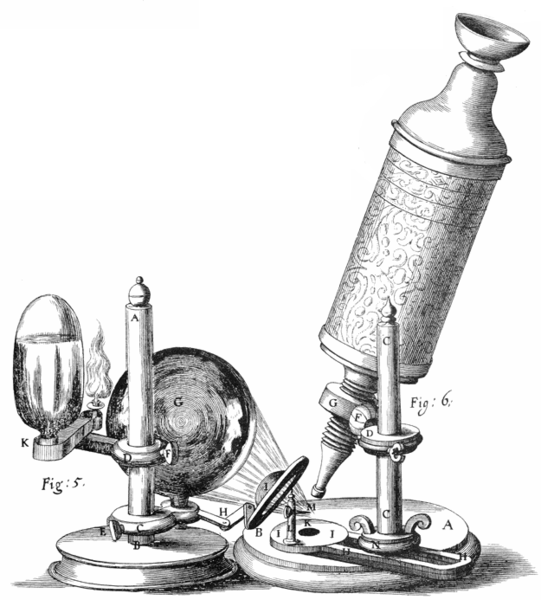Kirsten Walsh writes…
Recently I read Alan Shapiro’s paper, ‘Newton’s “Experimental Philosophy”’, in which he argues that
- the apparent continuity between Newton’s usage [of the term ‘experimental philosophy’] and that of the early Royal Society is, however, largely an illusion.
To support this claim, Shapiro argues that, whereas ‘experimental philosophy’ was used as a synonym for ‘mechanical philosophy’ by the early Royal Society, for Newton, the two terms had different meanings. This is demonstrated by the fact that Newton adopted the experimental philosophy, but not the mechanical philosophy.
Shapiro explains that the mechanical philosophy is characterised by adherence to some or all of the following theses:
- the world and its components behave like a machine; or, more strongly, the world can be described solely by the mathematical laws of mechanics; all causation is by contact action so that the immaterial, spiritual agents are banished; matter is composed of invisible corpuscles; and hypotheses about the properties and motions of these invisible corpuscles may be formulated to explain visible effects.
Here Shapiro is conflating mechanism and corpuscularianism. However, Peter Anstey explains in his recent book, John Locke and Natural Philosophy, that these are distinct (but related) philosophies. The leading idea of the mechanical philosophy is that natural phenomena should be explained by analogy with the functioning of machines. The corpuscularian philosophy is primarily a philosophy about the underlying nature of matter, whereby explanations of natural phenomena are constrained by appeal to the invisible corpuscles which constitute all material bodies. Thus, the former is a theory of explanation; the latter, a theory of matter. There is a significant amount of overlap between the mechanical and corpuscularian philosophies, for example the focus on shape, size, motion and texture. But, they are not interchangeable. For example, Anstey points out that it wasn’t the case that everyone who held a corpuscularian theory of matter was a mechanical philosopher.
In contrast, the experimental philosophy emphasises that we can only acquire knowledge of nature by first accumulating observations and experiments and then turning to theory and hypotheses. Thus, the experimental philosophy is a theory of method, which can be viewed as placing epistemic constraints on philosophical endeavours, as opposed to the explanatory constraints of the mechanical philosophy, or the ontological constraints of the corpuscularian philosophy. So, at least notionally, these are three distinct philosophical positions.
Shapiro argues that, in practice, the early Royal Society didn’t distinguish between these philosophical positions. As evidence, he cites a passage from the preface to Robert Hooke’s Micrographia in which Hooke runs together “the real, the mechanical, the experimental philosophy”. But if we look at Hooke’s other work for uses of the term ‘mechanical’, we find that he can and does distinguish the mechanical from the experimental.
When Hooke explicitly discusses experimental philosophy, he emphasises the importance of constructing natural histories. For example, in his ‘General Scheme’, where he sets out his “Method of Improving Natural Philosophy”, Hooke explains that the best way to proceed is according to the Baconian method of natural history. He says there are three “ways of discovering the Properties and Powers [of bodies]”:
- I. By the Help of the Naked Senses.
- II. By the Senses assisted with Instruments, and arm’d with Engines.
- III. By Induction, or comparing the collected Observations, by the two preceding Helps, and ratiocinating from them.
When he discusses III, Hooke explains that an understanding of mathematics and mechanics “will most assist the Mind in making, examining, and ratiocinating from Experiments”:
- Mechanicks also being partly Physical, and partly Mathematical, do bring the Mind more closely to the business it designs, and shews it a Pattern of Demonstration, in Physical Operations, manifests the possible Ways, how Powers may act in the moving resisting Bodies: Gives a Scheme of the Laws and Rules of Motion, and as it were enters the Mind into a Method of accurate and demonstrative Inquiry and Examination of Physical Operations. For though the Operations of Nature are more secret and abstruse; and hid from our discerning, or discovering of them, than those more gross and obvious ones of Engines, yet it seems most probable, by the Effects and Circumstances; that most of them may be as capable of Demonstration and Reduction to a certain Rule, as the Operations of Mechanicks or Arts.
Later in the same discussion, Hooke enumerates the different kinds of observations one should make when constructing natural histories:
- 25ly, To enquire and try how many Mechanical Ways there may be of working on, or altering the Proprieties of several Bodies; such as hammering, pounding, grinding, rowling, steeping, soaking, dissolving, heating, burning, freezing, melting, &c.
Hooke is using the term ‘mechanical’ in (at least) two different senses. In the first sense, the term describes the processes of machines; in the second sense, the term describes manual work. But he conflates neither of these with the experimental philosophy. They are distinct, albeit related, philosophies.
Previously on this blog we have claimed that some features of Newton’s early methodology, for example his early use of queries, suggest that he was influenced by the new experimental philosophy of the early Royal Society. I do not claim that Newton’s experimental philosophy is continuous with the experimental philosophy of the early Royal Society, so I do not take issue with Shapiro’s main claim. But I do take issue with his claim that the ‘mechanical philosophy’ and ‘experimental philosophy’ were considered by the early Royal Society to be synonymous.


One thought on “Conflating the Experimental and Mechanical Philosophies”
Interestingly, the Newtonian John Keill in his _Introductio ad verum physicam_ of 1702 clearly distinguished between the experimental philosophy and the mechanical philosophy. See p. 2